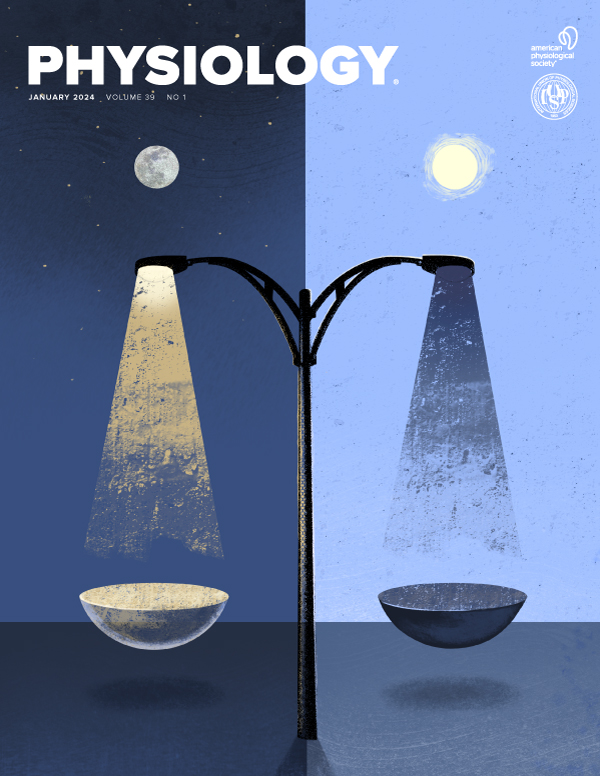Optimization of pulmonary artery mechanical testing
IF 5.3
2区 医学
Q1 PHYSIOLOGY
引用次数: 0
Abstract
Pulmonary arterial hypertension (PAH) is an incurable disease with mortality within 3 years in 28-55% of high-risk patients. The progression of PAH has been known to be associated with increased vascular stiffness and vascular remodeling. Recent studies have suggested that increased stiffness may in fact be a driver for some of the metabolic abnormalities observed during PAH. To gain more insights into this relationship, we need to quantify the differences in mechanical properties of healthy and hypertensive pulmonary arteries. The stress-strain relationship is the gold standard for the ex-vivo stiffness measurement of arteries. This is obtained by obtaining force vs. distension data by tensile testing and using sample dimensions, i.e. length, lumen diameter, and wall thickness, to calculate engineering stress and strain. While this approach is well-optimized for large muscular arteries, it has not been used to test pulmonary arteries as their thin walls and low basal tone make it challenging to make precise measurements of sample wall thickness and lumen diameter. Thus, the goals of this study were to: 1) establish a reliable protocol for rat pulmonary artery tensile testing and 2) quantify the differences in stiffness between hypertensive and healthy pulmonary arteries. First, a methodology to improve the fidelity of determining the lumen diameter and wall thickness was developed. Using this approach, we observed that the modulus was negatively correlated with the length of the vessel segment tested. This suggests that vessel length should be standardized to perform reliable comparisons between groups. Next, we performed tensile tensing on both control and hypertensive pulmonary arteries, after standardizing vessel segment lengths. We initially modeled this tensile testing data using a one-term exponential equation and we observed that intact hypertensive arteries were ~2.7 times stiffer than control arteries at low strain (strain = 0.8). Whereas at high strain (strain = 2.8) intact and decellularized hypertensive arteries were 20 and 29 times stiffer than control arteries respectively. To better capture the viscoelastic properties of both, the cellular and ECM components of the vessels we also fit the tensile testing data using a two-term exponential equation. Using this two-term exponential model, we observed that hypertensive vessels were 2.2 times stiffer than the controls at normal hoop stress (20 kPa), and at the hypertensive hoop stress (66 kPa) the diseased vessels showed less variability in stiffness as compared to the controls. These findings and the methods developed in this study will be helpful in conducting and analyzing experiments to investigate the relationship between changes in biomechanical signals and the progression of PAH. R01HL151530 (KS), R01HL126514 (LS). This is the full abstract presented at the American Physiology Summit 2024 meeting and is only available in HTML format. There are no additional versions or additional content available for this abstract. Physiology was not involved in the peer review process.优化肺动脉机械测试
肺动脉高压(PAH)是一种无法治愈的疾病,28%-55%的高危患者会在 3 年内死亡。众所周知,PAH 的进展与血管僵硬度增加和血管重塑有关。最近的研究表明,血管僵化的增加实际上可能是 PAH 期间观察到的一些代谢异常的驱动因素。为了深入了解这种关系,我们需要量化健康肺动脉和高血压肺动脉机械特性的差异。应力-应变关系是体内外动脉僵硬度测量的黄金标准。其方法是通过拉伸试验获得力与拉伸的关系数据,并使用样本尺寸(即长度、管腔直径和管壁厚度)计算工程应力和应变。虽然这种方法非常适合大型肌肉动脉,但尚未用于测试肺动脉,因为肺动脉壁薄、基底张力低,很难精确测量样本壁厚和管腔直径。因此,本研究的目标是1)建立大鼠肺动脉拉伸测试的可靠方案;2)量化高血压肺动脉和健康肺动脉在硬度方面的差异。首先,我们开发了一种方法来提高确定管腔直径和管壁厚度的准确性。利用这种方法,我们观察到模量与被测血管段的长度呈负相关。这表明血管长度应标准化,以便在组间进行可靠的比较。接下来,在对血管段长度进行标准化后,我们对对照组和高血压肺动脉进行了拉伸试验。我们最初使用单项指数方程对拉伸测试数据进行建模,观察到完整的高血压动脉在低应变(应变 = 0.8)时的硬度是对照组动脉的 ~2.7 倍。而在高应变(应变 = 2.8)时,完整和脱细胞高血压动脉的硬度分别是对照动脉的 20 倍和 29 倍。为了更好地捕捉血管中细胞和 ECM 成分的粘弹性特性,我们还使用了双项指数方程来拟合拉伸测试数据。使用该两期指数模型,我们观察到高血压血管在正常箍应力(20 kPa)下的刚度是对照组的 2.2 倍,而在高血压箍应力(66 kPa)下,病变血管的刚度与对照组相比变化较小。这些发现和本研究开发的方法将有助于开展和分析实验,研究生物力学信号变化与 PAH 进展之间的关系。R01HL151530(KS)、R01HL126514(LS)。这是在 2024 年美国生理学峰会上发表的摘要全文,只有 HTML 格式。本摘要没有附加版本或附加内容。生理学》未参与同行评审过程。
本文章由计算机程序翻译,如有差异,请以英文原文为准。
求助全文
约1分钟内获得全文
求助全文
来源期刊

Physiology
医学-生理学
CiteScore
14.50
自引率
0.00%
发文量
37
期刊介绍:
Physiology journal features meticulously crafted review articles penned by esteemed leaders in their respective fields. These articles undergo rigorous peer review and showcase the forefront of cutting-edge advances across various domains of physiology. Our Editorial Board, comprised of distinguished leaders in the broad spectrum of physiology, convenes annually to deliberate and recommend pioneering topics for review articles, as well as select the most suitable scientists to author these articles. Join us in exploring the forefront of physiological research and innovation.
文献相关原料
| 公司名称 | 产品信息 | 采购帮参考价格 |
|---|
 求助内容:
求助内容: 应助结果提醒方式:
应助结果提醒方式:


